
Alexandria Crow
YST ↠ Philosophy Course
D2R BIZ ↠ Build Your Dream Yoga Biz
D2R ↠ Anatomy Course-End Injuries + Amplify Accessibility
START LEARNING NOW ↯
Recent Posts
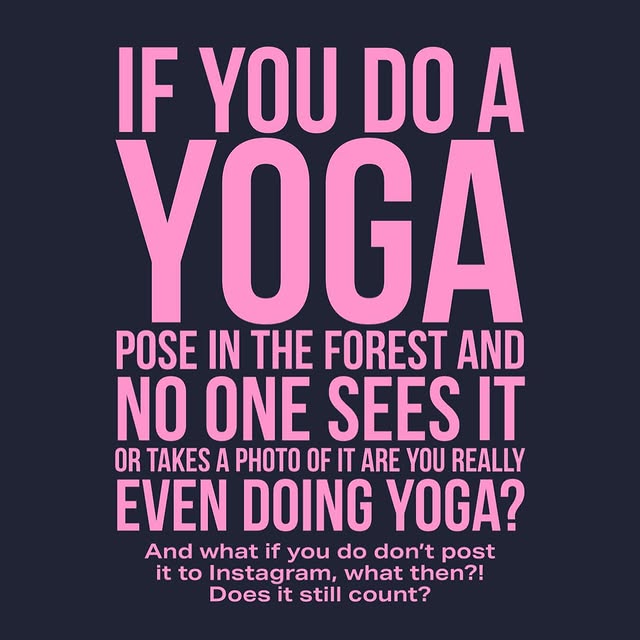
CONVERSATION STARTER—Is your yoga practice about external validation or is it always just for you? A yoga practice is a way for us to interact with yoga’s teachings. It’s meant to reacquaint us with our inherent wholeness and to remind us that our value cannot be measured by any outward traits or accomplishments. It can help us disentangle ourselves from the systems that trap us and that value human beings based on productivity and output, not on who they are. But that’s only possible when yoga is practiced with fidelity and with adherence to its core philosophical principles. Sadly, those principles are often hidden behind a glossy veneer of fancy poses, flashy leggins, and dressed-up diet culture. We are taught to assess our progress in our practice with the poses we can attain and how we look doing them. Of course, no such progression is necessary for worthiness. But thanks to the ever-present stream of seemingly-perfect asana in our feeds and even in classes, it’s hard to convince ourselves of that fact. We all need validation in some way, of course. For humans, social interaction and connectivity are key to our survival and happiness. But sometimes we’re so hooked on the validation that yoga becomes a performance instead of a practice. We end up measuring progress on external measures instead of on internal ones like grace in the face of change, how we treat ourselves, and how we treat others. That’s why yoga’s philosophical teachings urge us to turn our attention inwards, so that instead of seeking external validation from a place of lack we seek it as a way to find true connectivity. That’s why it’s vital to dive deeply into yoga’s philosophical teachings. Without them it’s far too easy to fall into the validation and performance trap instead of experiencing all that yoga has to offer in terms of growth and ease. How would your practice change if no one was watching or if there weren’t any poses to do? . . . . . #yogaphysics #yoga #yogaforeveryone #accessibleyoga #yogapic #yogaasana #modernyoga #yogarevolution #yoga101 #yogateacher #yogapractice #yogaphoto #yogaeverywhere #yogaphotography #yogaselfie

CONVERSATION STARTER: Have you ever suffered from āsana practice guilt? You know, that nagging feeling you get when you aren’t practicing āsana in the way you teach or were taught. A regular and worthwhile yoga practice doesn’t need to include a mat—and it definitely doesn’t need to involve sweaty vinyasa flows. So why isn’t the #yogaeverydamnday hashtag full of images of people using a variety of techniques or graphics explaining that there are a wide variety of approaches one can use to fit changing needs? And no, I don’t mean making yoga into anything you want via appropriation, but instead using more than just āsana. The yoga industry is mixed up with #nodaysoff fitness culture, which tells us we lack discipline if we dare to take a day to rest our bodies. That emphasis on proving something only perpetuates the binaries and self-judgment that yoga is meant to lead us away from. I used to believe I needed to practice āsana every day to teach well. When injuries ended my ability to prove my worth with fancy poses, I was forced to rethink things. I learned that I could achieve the aims of complex poses—and make them accessible to others—by focusing on the function of the poses over their form. And along the way, I found that I could have a very deep and personally beneficial practice even if all I did for a week was lie in Constructive Rest or sit for meditation each morning. Sure, Patañjali never said practice was optional. But he definitely never said a yoga practice needed to involve chaturangas or side crows either. The real practice is the hard, uncomfortable inner work and sometimes it’s even boring and monotonous. And sometimes it involves letting go of damaging cycles like the hyperfocus on perfection and physicality that can surround physical practice. What’s included in your vision of a good and steady practice—and what can you let go of? #yogaphysics #meditation #yogaforeveryone #accessibleyoga #yogaphilosophy #functionalyoga #modernyoga #yogarevolution #yoga101 #yogateacher #yogapose #yogapractice #yogaeducation #yogastudent #yogaasana #asana #yogaathome
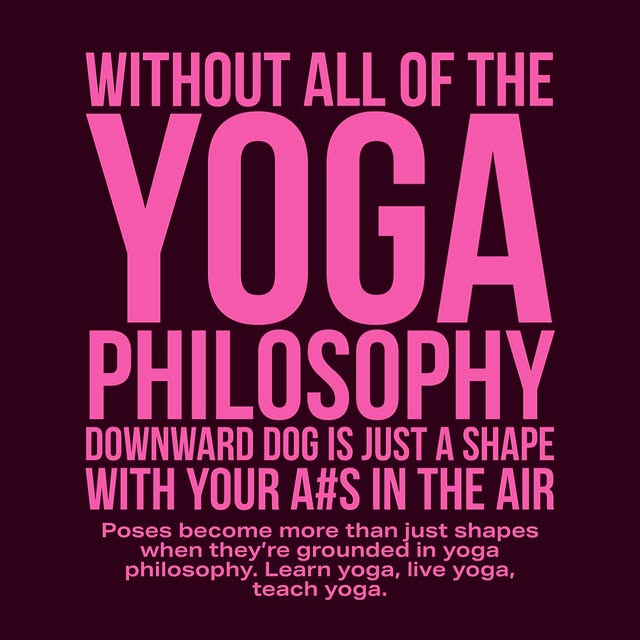
CONVERSATION STARTER—The poses aren’t the point, right? Downward dog doesn’t necessarily have anything to do with a yoga practice and a yoga practice doesn’t necessarily have anything to do with downward dog. You can be in a seated position and not practicing yoga or sitting and practicing yoga. From the outside it might look identical, it’s what’s going on internally that’s the deciding factor. You can’t even gauge who’s a living or practicing yoga at all from the outside. But have you ever worried that your yoga practice isn’t valid or good enough because it doesn’t include certain poses? Have you assumed that other students or teachers have it all together because the poses seem to come naturally to them? Guess what—no single pose makes a yoga practice. In fact, poses aren’t even necessary. And assuming someone is practicing real yoga because of the poses they perform or who “strong” their practice looks is like assuming an emu can fly just because it has wings. Simply going through the motions of the poses, does not equal a yoga practice. And I don’t say that to gatekeep—not everyone wants to practice yoga and that’s totally okay. But it’s important to recognize the original, true intent of a yoga practice and to honor it’s roots, culture, and meaning. Conversely, you can have an incredibly fulfilling, meaningful, and “advanced” practice without ever getting into a single one of the poses that modern classes treat as essential. Spend a lot of time lying flat on your back on the floor while you meditate? Yup, that’s yoga. That’s why diving into the teachings is so darn important. I cannot emphasis it enough. It’s the vital ingredient to bring yoga to life as a teacher and as a student. Yoga’s philosophy in action and application is what will let you truly deal with the ebbs and flows of life with more balance in your response. Do you wish you knew more about yoga’s practices and teachings beyond the poses and just the 8 limbs? . . . #yogaphysics #accessibleyoga #adaptiveyoga #functionalyoga #inclusiveyoga #modernyoga #yoga101 #yogaasana #yogapose #yogaforall #yogaforeveryone #yogapractice #yogateacher #yogaphilosophy #yogarevolution
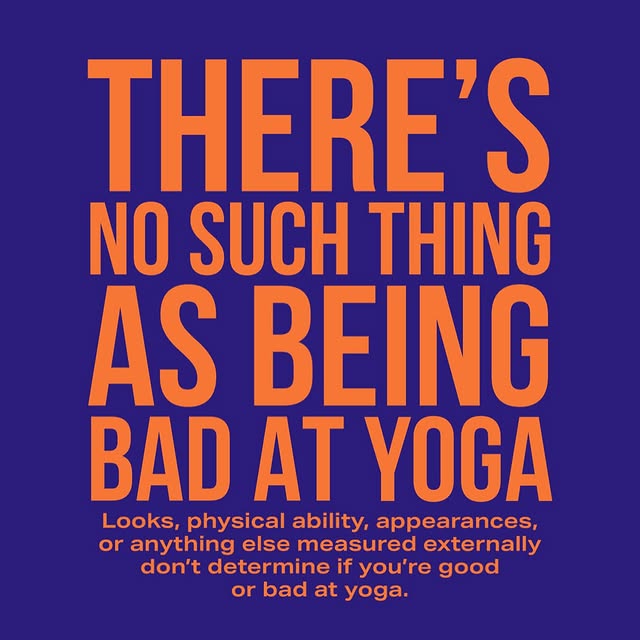
CONVERSATION STARTER—Have you ever worried that you’re bad at yoga? Have you heard other students complain that no matter how hard they try, they just can’t get “good” at it? As a teacher, this is something I’ve heard time and time again—and I’ve seen the shame and frustration that this belief causes. But guess what? Yoga isn’t something you can be “good” or “bad” at. It’s a lifelong personal and spiritual practice with no end, not a ladder with rungs to climb or a sport that hands out medals. Most of the time, when people talk about being bad at yoga, they’re really talking about being bad at poses. And sure, they may not be able to do the fancy or so-called “advanced” poses, and they may never get there. But guess what? That doesn’t actually mean they are bad at poses! Once again, we need to reflect on the purpose of asana. Like yoga as a whole, there are no prizes for getting into a perfect Crow pose or balancing the longest in a headstand. Asana is simply one of the eight limbs of yoga (not to mention there’s much beyond the 8 limbs…hint,hint…study the Gītā), a tool to help us along our larger personal journey. And its worth is not measured by the poses you can or cannot do. The poses are morally neutral, they do not confer any kind of special yoga powers or magically move you three steps along in personal growth. That said, you’re also not a “bad” yoga student if you struggle to maintain a meditation practice, or have a hard time understanding the concepts in the texts. That’s simply the point you’re at on your personal journey; it isn’t good or bad. It simply is. In fact, I’d argue that one measure of progress might be the ability to let go of the idea of being “good” at yoga at all, since that’s simply another form of attachment. No matter what your practice looks like, it—and you—are worthy. Have you ever worried that you’re bad at yoga or heard other people say they are? . . . . . . . #yogaphysics #yoga #yogaforeveryone #yogapose #accessibleyoga #yogaforallbodies #functionalyoga #modernyoga #yogarevolution #yoga101 #yogateacher #yogapractice #yogaeducation #yogastudent #yogaforall #beginneryoga #advancedyoga #yogaeverydamnday #asana
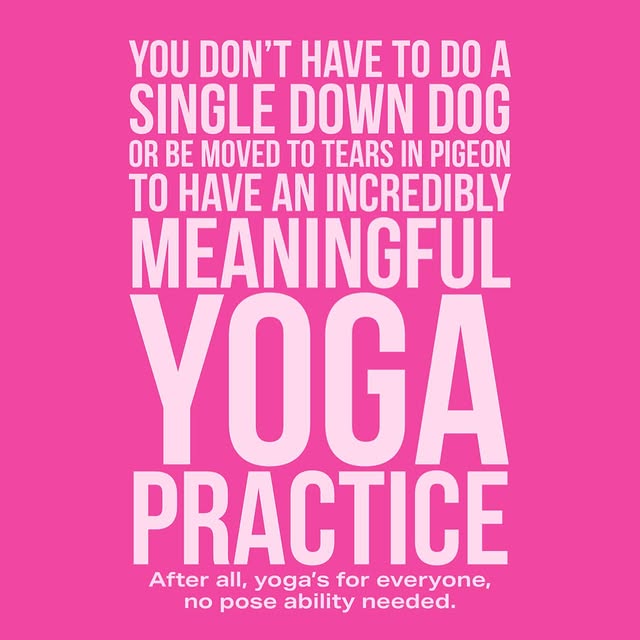
CONVERSATION STARTER一Is there a pose that you cannot do and you know isn’t right for you, yet find hard to avoid because it’s in almost every class? Do you worry that without that pose you’re not practicing yoga fully so you can’t quite let go of it? Do you have FOMO when teachers describe the experience you’re meant to have in a pose and yet that’s not your experience at all? We know that the poses aren’t the point. They’re a means to an end, a vehicle for learning something unseen and internal that we say is available to everyone. So why do the vast majority of yoga classes contain poses that a huge portion of the public cannot do, no matter how much effort they put in? No single pose, no matter how “foundational” we’re told it is, will magically make you enlightened or an advanced practitioner. Every one, just like a physical practice in general, is simply a means to an end, and that end can be achieved via a number of different approaches. Downward dogs are present in pretty much every yoga class these days, same with sun salutes, pigeon, seated forward bends and many other poses. But these poses don’t have any significant standing (frankly they aren’t mentioned at all) in yoga’s fundamental teachings. Sure, attend any mainstream class and you’re sure to see plenty of poses like these. But that doesn’t mean in any way that they’re essential to the practice, that you can’t advance if you can’t or don’t do them, or that they have any inherent spiritual or moral value. Their prevalence also doesn’t mean that by getting into a downward facing dog you’re practicing yoga. Practicing doesn’t mean just getting on the mat and getting into a certain shape, it means developing a practice that is about far more than any physical achievement and much more about internal work and reflection. Without that, downward facing dog is just an exercise. What pose are you afraid to let go of b/c of FOMO fears? . . . . . . . . #yogaphysics #accessibleyoga #yoga #yoga101 #yogaasana #yogaforall #yogaforeveryone #yogapractice #yogateacher #yogainspiration #yogarevolution #asana #yogaposes #yogaeverydamnday #yogastudent #yogaforallbodies
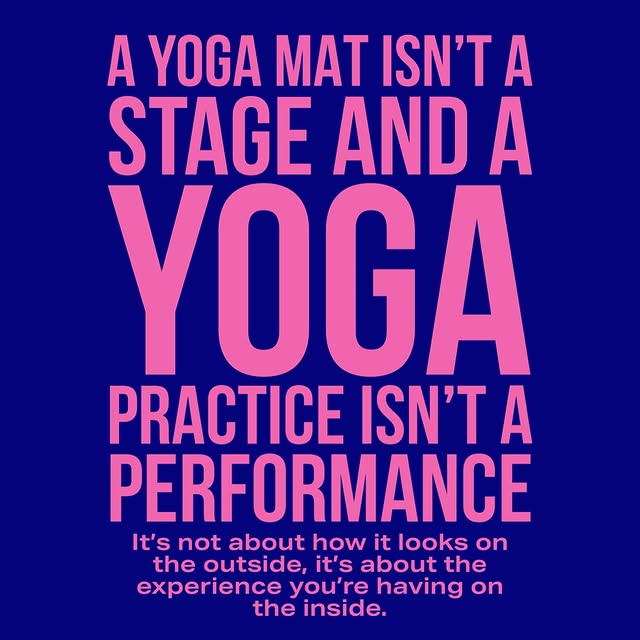
CONVERSATION STARTER—Have you ever found yourself more worried about how your yoga practice looks to those around you than how it feels within your body? I’ve heard from many students who spend much of their practice obsessing about how their posture looks, whether their toes are turned out the right way, or if their stomachs are sucked in. Many of us have spent hours on hours competing (in our minds only, of course) with the student on the next mat, trying to win the approval of our peers or our teachers. But why? You won’t advance through the ranks or get an encore, and you certainly won’t be chosen for the Olympic team. So how does an internally-focused spiritual practice feel so much like a competition or performance? Unfortunately, we live in a culture that treats just about everything as a game in which there is always a winner and a loser. And the fact that most of us learn from a young age to base our self-worth on the approval of others doesn’t help. But when it comes to yoga, seeking approval or trying to “win” is not only meaningless but also counterproductive. How on earth are you supposed to turn inward and learn more about yourself if you’re always focusing on how you look to others? Real progress through yoga tends to involve moving away from the need for perfection and validation. For many of us, that’s a lifelong path. Sometimes, it takes a long break from mainstream group yoga, whether by choice or because of necessity or injury, to make that shift. Change can also happen because you’ve just had enough of buying to the performance narrative. But when you can drop the pretense and the obsessive perfection, things start to feel a lot better, and a lot more meaningful. It’s only then that the true message of yoga becomes clear: that you are enough exactly as you are, with no requirements or preconditions. Have you struggled with worrying about how your practice looks rather than how it feels? . . . . . . #yogaphysics #yogaforeveryone #accessibleyoga #yogaforallbodies #functionalyoga #modernyoga #yogarevolution #yoga101 #yogateacher #yogapose #yogapractice #yogaeducation #yogastudent #yogaasana #asana

CONVERSATION STARTER—It’s that time of year again, the annual barrage of posts and classes about “detoxing” or “earning” your holiday meal. You seeing them too? The part of the year where messaging about earning the right to eat or paying penance for it after the fact gets turned up full blast. Hear me loud and clear. You don’t have to earn the right to enjoy yourself and there’s no self flagellation needed just because you ate a larger-than-usual meal. Yoga can improve our health in many ways, and gentle movement can feel good, but doing specific “prescribed” poses is not going to change biological processes that have evolved over millions of years. Your body breaks down waste on a molecular level, whether or not you’ve done a spinal twist today. But the real issue we need to address here is the insidious diet culture messaging that has crept into the yoga world. When people talk about detoxing or sweating it off, that usually means one thing—trying, at all costs, to “atone” for eating that could (gasp!) budge the needle on the scale. Our culture attaches a lot of morality and judgment to our weights, and the yoga world, where the “ideal body” is portrayed as young and slim, is no exception. And since yoga has been co-opted by the West as a fitness modality, yoga ends up portrayed as a way to “atone” for any dietary misdeeds. But just as yoga has little to do with how flexible we are, our weights are entirely irrelevant to our practices. In fact, obsession with our size is just another example of the kind of negative attachment that causes suffering and holds us back. Messaging that intertwines yoga and detoxing or weight loss, therefore, is wildly counterproductive. What you put on your plate has nothing to do with your inherent worth as a human being. And you certainly don’t need to “earn” it through yoga. How do you feel about the detox/penance messaging that pops up this time of year? . . . . . . . . #yogaphysics #yogateachertraining #yogaforeveryone #accessibleyoga #yogaforeveryone #functionalyoga #modernyoga #yogarevolution #yoga101 #yogateacher #dietculturesucks #dietculture #yogadetox #yoga
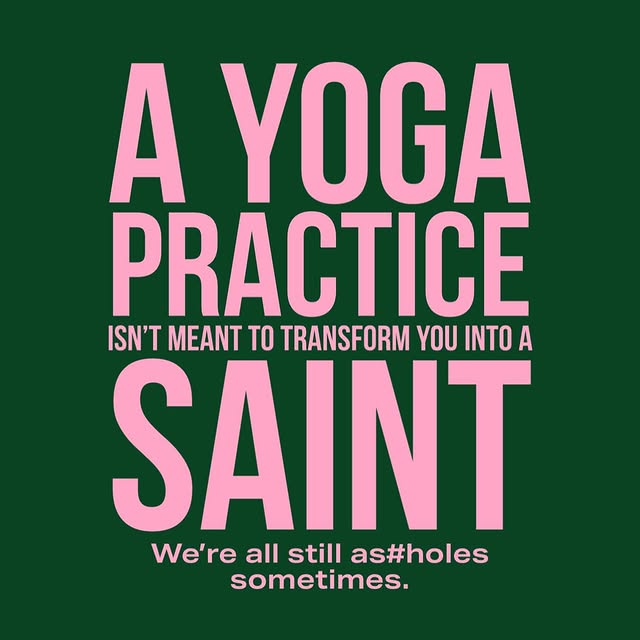
CONVERSATION STARTER—Have ever thought you’d finally become a beacon of peace and calm, only to find yourself suddenly behaving like an absolute as*hole? Yoga’s teachings do indeed help us learn to handle things with more grace—but no amount of asana or meditation will turn us into perfect, infallible people. I mean, let’s be real, what the heck is perfection anyhow?! Yoga’s teachings and philosophy don’t teach us that we need to be saintlike or perfectly tranquil all the time. That’s not realistic and negates human nature. We all find equanimity at times and then get thrown curve balls that knock us into states of frenzy, yoga’s designed to help us endure those bumps and knocks and to give us a pathway back to ease and acceptance. But these benefits are only really found when we understand the teachings and tools that yoga’s philosophical texts lay out for us. How can we see a situation with clarity and truth and make our way back to a state of acceptance if we don’t know what “truth” and “acceptance” mean within the context of yoga’s teachings? Acceptance can quickly become complacency or oppression if we’re not clear on the term, the context, and the application. That’s why deep diving into these teachings is something I strongly believe in. If we learn from and apply the teachings maybe we can allow that wisdom to help us accept the messiness that makes all of us human. Anger, frustration, grief, and all those other oh-so-fun feelings are all part of that package. The real work isn’t to make these feelings disappear, and to understand that feeling negative emotions does not mean we are inherently flawed or any less worthy. Ideally, you can learn to calm yourself and take a breath before reacting or to be compassionate and empathetic when less than idea reactions pop up. Despite your practice, do you still find your inner as#hole rearing its ugly head? Has yoga helped you to compassionately and skillfully deal with that sort of behavior? . . #yogaphysics #accessibleyoga #yoga #yoga101 #yogaasana #yogaforall #yogaforeveryone #yogapractice #yogateacher #yogainspiration #yogarevolution #asana #yogaposes #yogaeverydamnday #yogastudent #yogaforallbodies
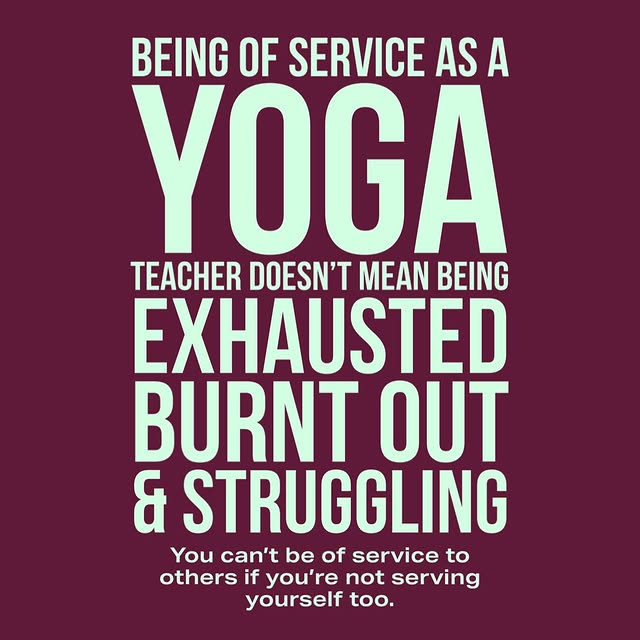
CONVERSATION STARTER—If you’re constantly exhausted, teaching back-to-back classes, rushing between studios, skipping meals, and crashing on the couch with no energy left…how is that helping anyone? Yoga teachers have been sold the idea that self-sacrifice and constant service are part of the job. But what that often looks like is running yourself ragged as proof of your dedication. How can you guide others toward balance, connection, and self-acceptance if you’re skipping your own practice, never taking a day off, and putting your needs at the bottom of the list? Burnout doesn’t make you a better teacher. It doesn’t make you more noble. It just leaves you tired, resentful, and unable to show up fully for your students—or yourself. What if you stopped equating exhaustion with success? You don’t have to teach 20+ classes a week (there are other ways—I help yoga teachers develop those every day). You don’t have to sacrifice your body, time, or mental health to keep your business afloat. Imagine swapping exhaustion for energy to enjoy dinner with family—or taking a real vacation without worrying about income…Gasp! It’s possible though! Plus, if you’re relying on physical ability or just physicality, you’re setting yourself up for a short-term job, not a long-term career—and I know you love what you do too much to give it up to injury or burnout. When I got injured over a decade ago, it threw a wrench in my teaching. I lost money and clients because I was in too much pain to work. And I’m not alone—that’s common. It’s time to change that. Your ability to thrive doesn’t have to come from your body’s abilities. And if you think outside the box, you don’t even have to always be there live or in person to offer great yoga classes and content. Are you a burnt-out yoga teacher who wishes there was a better way? Have you ever felt like sacrificing yourself was the only way to make it as a yoga teacher? . . . . #yogaphysics #accessibleyoga #yoga #yogabusiness #yoga101 #yogaasana #yogastudent #yogapractice #yogateacher #yogainspiration #yogarevolution #asana #yogaposes #yogaeverydamnday
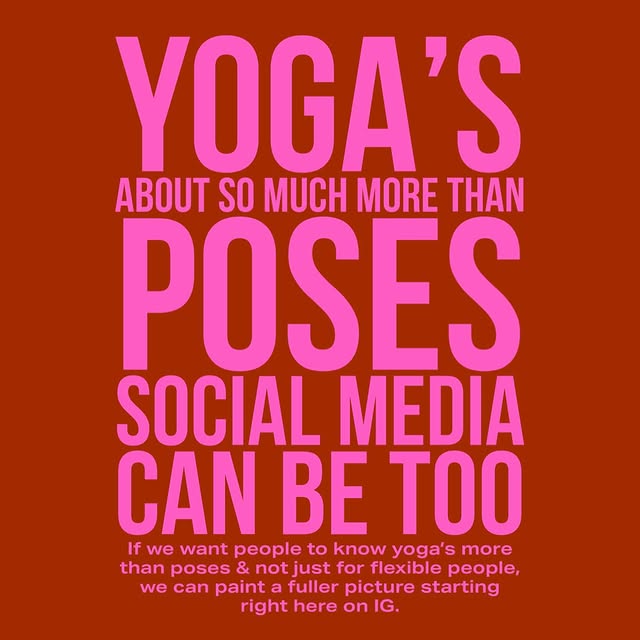
The Instagram yoga world can be a challenge! Does it have you unsure what to post besides photos of asana or video tutorials? Yoga’s about more than poses, but so many social media posts show only that, keeping the yoga world and your business stuck. You’re showing up. You’re posting. But it’s not doing much. No new students. No courses filling. No growth. You’re putting in the effort, but the results? Crickets. Here’s the thing… It’s not your fault. It’s what most yoga teachers are doing—pose photos, generic quotes, or tutorials that don’t fully connect. Pose photos aren’t filling your classes or growing your business because they don’t show what yoga’s really about or how it helps your students. Social media doesn’t have to feel out of alignment with yoga. You can honor yoga’s roots and traditions, representing its depth—not just poses—while building a thriving business. Right now, your social media isn’t speaking to your ideal students. It’s not showing them how yoga helps with stress, anxiety, or burnout. It’s not making them think, “Wow, this is exactly what I need.” And it’s rarely making them click “sign up.” But it can. What if your posts connected so deeply with students that they couldn’t wait to join your classes, workshops, or courses? What if social media became a tool that grows your business AND feels good to use—no more cringe, no more exhaustion, just confidence and results? That’s exactly what I’m teaching in my D2R BIZ: Popup Mini - Posts That Perform (No Pose Photos Required). You’ll learn how to: ✅ Write posts that speak directly to your students’ struggles and desires. ✅ Create bold, eye-catching graphics that stop the scroll. ✅ Honor yoga’s depth by sharing content that reflects its true essence. Date: Nov 26 Time: 1-2:30 PM ET Cost: $17 This is your chance to paint a fuller picture of yoga—showing its depth and how it truly helps students—while building a thriving business. Comment ‘POSTS’ to grab your ticket, or you can always find the link where they usually are….in my bio 😉 . . . #yogaphysics #yogabusiness #yogateacher #yogapreneur #yogaprofessional #yogasocialmedia #yoga #yogacontentcreation #yogainspiration
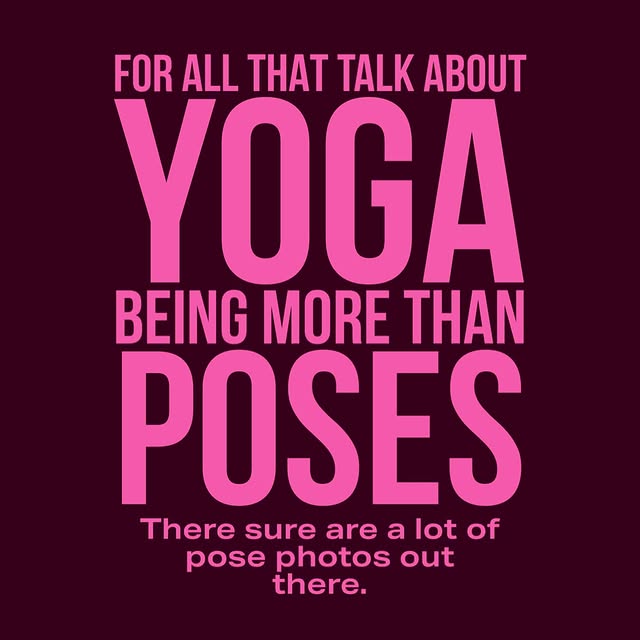
But if you don’t post pose photos, then your business will collapse, you won’t attract students, and your page won’t grow, right? Nope. Not true. There’s another way to post—a way that performs equally well, if not better. A way that actually communicates what yoga is truly about and speaks to the heart of what your students are really looking for. (My IG page is living proof of this.) Students don’t come to yoga to learn poses because they think mastering poses is their end goal. They come to yoga because they’re searching for something deeper. They want tools to manage stress, feel more at peace, navigate life’s challenges, and reconnect with themselves. And when you create social content that speaks directly to those deeper desires—and the struggles they’re facing—you create posts that resonate, connect, and move them to engage with what you’re offering. Pose photos and generic posts don’t do this. They miss the mark. But when your posts align with your expertise and address the real problems yoga is designed to help with, you start building trust, filling your classes, and creating a business that thrives. This is the kind of content your students are hungry for, and I want to help you create it. Comment “POSTS” and I’ll send you the link to grab a ticket to my new D2R popup mini online workshop: Posts That Perform (Pose Photos Not Required). Learn how to: * Create graphics that pop and stand out from the crowd. * Write hooks that grab attention instantly. * Craft captions that speak directly to your students’ struggles and move them toward the change you can help them achieve. * Build content that connects deeply and authentically—with zero cringe. Cost: This workshop is only $17 to attend! When: Tues, Nov 26 Time: 1-2:30pm Eastern Can’t attend live? No worries! Buy your ticket now, and you’ll get access to watch the recording for 14 days at your leisure. Don’t forget to comment “POSTS” to grab your ticket. Your business will thank you. . . . #yogaphysics #yogabusiness #yogateacher #yogapreneur #yogaprofessional #yogasocialmedia #yogaeducation #socialmediatips #yoga #yogacontentcreation #yogateachertraining #yogainspiration #yogaeverydamnday

CONVERSATION STARTER—Have you felt like you have to perform poses or take photos of them to be taken seriously as a teacher? Currently, yoga is highly weighted toward the physical and the visual, especially on social media. (It doesn’t have to be, as I’ve been talking about a lot lately—there are better ways, but we’ll save that for tomorrow’s post 😉). A lot of the assumptions and beliefs about what’s advanced, who’s a great teacher, and who has a “strong practice” are tied to poses and how they look. That means people are often judged based on what they do on the mat or in front of a camera. That, sadly, is especially true for teachers. So many feel like they have to physically perform certain poses to be taken seriously or to land jobs. Then there’s the marketing that individual teachers and studios rely on, which often heavily features pose photos. But these inclinations miss the mark more often than not. First of all, yoga isn’t about what poses you can do (how many times have you heard me say it?). A teacher can do all the flashy poses in the world, but if they don’t understand the philosophy that underpins yoga and don’t see the poses as a tool for a broader spiritual evolution, then they’re teaching acrobatics. Plus, knowing how to do a pose doesn’t mean a teacher understands the anatomy behind it, the factors that make it unsafe for some, or how to offer meaningful modifications. And pose photos? More often than not, they’re not even representative of what you teach in class or what your classes are about. They’re not a great marketing strategy—there are so many better ways to share yoga and what you offer, I promise. Teaching is its own skill set, and teaching yoga requires knowledge of…well…YOGA—which doesn’t really come from the ability to do a headstand, certainly not exclusively at all. Have you felt like you have to perform poses to be taken seriously as a teacher or to market your teaching to students? . . . . . #yogaphysics #accessibleyoga #yoga #yogabusiness #yoga101 #yogaasana #yogaphoto #yogaphotography #yogapractice #yogateacher #yogainspiration #yogarevolution #asana #yogaposes #yogaeverydamnday
Similar Influencers

Fit_OVER_40™️

Mary O’Donovan

Michael Boshnack

🌿🌱Body Nutrition Tips 🌾🌳🌴

Naturheilpraxis - Beautycare Xanten

Dailyhelthedge Dailyhelthedge

Yoga Daily Practice

Summerhill Shopping Centre

Beauty Tricks

Лікар гастроентеролог, терапевт Євгенія Белінська


DrSony Teja

proactIV hydration and wellness

Melanie | Herbalist, Birth Doula & Maker

Business | Masculinity | Motivation

Dr.Hashma shaik

S.H.Y By Cecil

Isabella

Joanna Nowak

DENTAL HOUSE ATHENS

🌸Jeanrin.Yanling ❤️ 燕玲🌸

Liz Richards | Daily Original Vids

Betty Pariso

Alice Cooper

IRINA

Beth Reading | Pilates Instructor

Kaitlyn Jaynne

Meg

Caitlin Latessa-Greene
